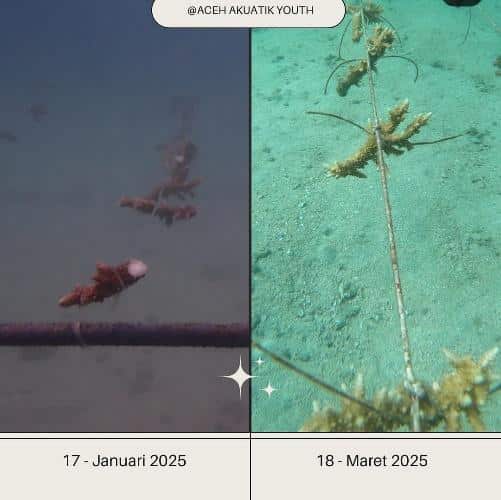Ibnu was one of the 4 Indonesians selected by Ocean Gardener to receive our scholarship to take part in our Full Coral Restoration Certification course. He’s an enterprising man that set up Aceh Aquatic Youth to rally his local community to help in restoring his local reefs. We thought it would be interesting for him to share his experience in coral restoration in Aceh, and how it compares to the reefs in Bali.
I had the opportunity to participate in the Ocean Gardener Scholarship program in Bali—an eye-opening experience that deepened my understanding of coral reef ecosystems. As a marine conservation activist based in Aceh, this opportunity meant a great deal to me, as I was able to learn directly from the experts like Vincent, who have long been involved in coral reef restoration. Today I want to share a little bit of the organization I helped create, as well as provide an insight into the reef of Aceh, a province not frequently visited by foreign tourists.
About Aceh Aquatic Youth
I set up Aceh Aquatic Youth as a youth-led organization based in Aceh, Indonesia, focused on marine conservation and environmental education. The organization was founded with a strong spirit to empower the younger generation of Aceh to actively participate in protecting aquatic ecosystems, especially coral reefs, mangroves, and coastal environments. Aceh Aquatic Youth, located in Aceh, Indonesia, is a youth-driven organization dedicated to marine conservation and environmental education. It was established to encourage young people in Aceh to take an active role in safeguarding aquatic ecosystems, particularly coral reefs, mangroves, and coastal areas.
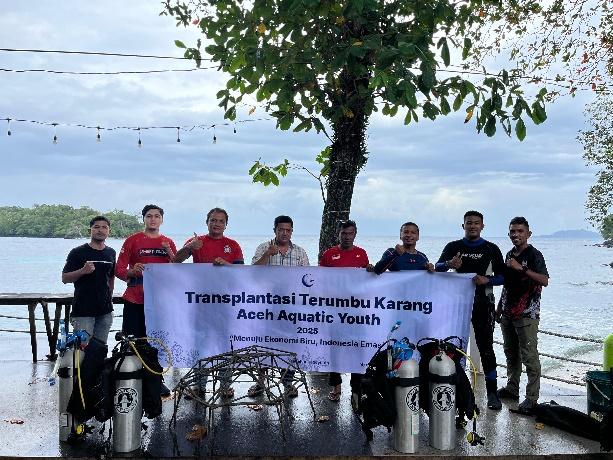
Our vision is to establish Aceh Aquatic Youth as a platform for young people in Aceh to contribute to sustainable marine conservation through actions grounded in knowledge, community involvement, and innovative strategies.Our mission has several parts. We educate the public, especially the youth, about why marine ecosystems are important. We work with the local communities, governments, schools, and international groups. We help young people grow through training, expeditions, and scholarships.
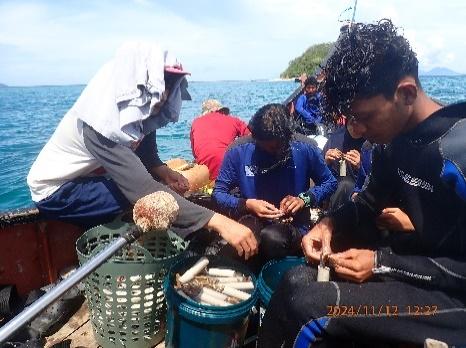
We also perform conservation work like restoring coral reefs and mangroves, check the health of our marine ecosystems by doing coral surveys and water quality tests, species identifications and counts. We organize expeditions and campaigns, such as beach clean-ups and Coral Day. Young people can participate in citizen science with us.
Where is Aceh and how are our reefs?
Aceh is a province located on the northernmost tip of Sumatra Island in Indonesia. It is known for its distinct culture, history, and governance, as well as its rich natural resources and beautiful landscapes, including its diverse marine ecosystems. Aceh is home to incredible marine biodiversity—from the waters of Pulau Weh to the Banyak Islands—but it also faces serious challenges like illegal fishing, habitat destruction, and low public awareness. Aceh Aquatic Youth aims to bridge the gap between this immense potential and meaningful youth-driven conservation efforts.
The condition of coral reefs in Aceh is quite different from those in Bali, particularly in Nusa Penida. In Aceh, reef conditions vary: some areas such as Batu Tokong, Rubiah Sea Garden, and Pantee Peunateung still have healthy coral formations, but other regions have suffered damage due to destructive fishing practices (such as blast fishing), coral bleaching, and unsustainable tourism activities in several marine areas around Sabang, Aceh—especially in popular diving and snorkeling destinations such as Pulau Rubiah, Iboih, and surrounding sites. The unsustainable tourism activities usually fall into:
- Anchor damage from boats: Many tourist boats or traditional vessels drop their anchors directly onto coral reefs, particularly due to the lack of—or inconsistent use of—mooring buoys. When anchors and their chains are lowered, they can break, crush, or scrape corals, causing permanent damage to the reef structures.
- Direct contact by tourists: Snorkelers or divers who are not properly educated sometimes step on corals, touch them, or even accidentally break coral fragments when swimming too close. Over time, this physical contact can stunt coral growth and trigger coral diseases.
- Pollution from boats and tourist waste: The limited availability of proper waste management facilities—both on boats and in tourist areas—also contributes to declining water quality, which directly affects the health of coral reef ecosystems.
What species can be found in Aceh?
The dominant coral species in Aceh are often from the genera Acropora, Pocillopora, Fungia, and Euphyllia. However, the live coral cover tends to be lower compared to what I observed in Nusa Penida, Bali.
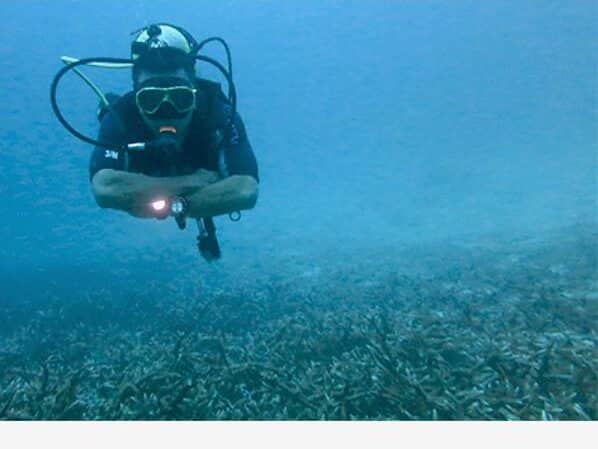
This image above captures me swimming above a coral colony from the Acropora genus found in the waters of Sabang, Aceh. Acropora is one of the most important reef-building hard corals, known for its fast growth and distinctive branching structure.
Coral reefs like these provide essential habitat for various reef fish and other marine life. While some parts of Sabang still maintain healthy coral cover, colonies like this are becoming increasingly rare due to environmental pressures such as coral bleaching, unsustainable tourism, and destructive fishing practices.
Method 1 : PVC racks
The preservation of species like Acropora is key to restoring and protecting Aceh’s marine ecosystem. In Aceh, we have been implementing a coral restoration method using nursery racks made from PVC pipes (paralon). These racks serve as substrates for coral transplantation. The structure is shaped like a table, with a frame built from PVC, which is then reinforced by filling or coating it with a cement and sand mixture to provide stability and durability underwater.
Each rack measures approximately 1 x 1 meter and is designed to hold 16 coral fragments (coral nubbins). These coral fragments are attached to the rack and monitored for growth and survival over time.
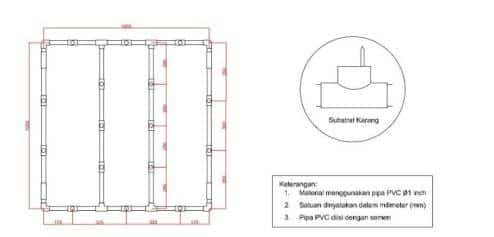
The coral species we have been focusing on include:
- Acropora spp. – fast-growing branching corals
- Pocillopora spp. – commonly used in restoration due to resilience
- Montipora spp. – plating or encrusting corals often found in local reefs
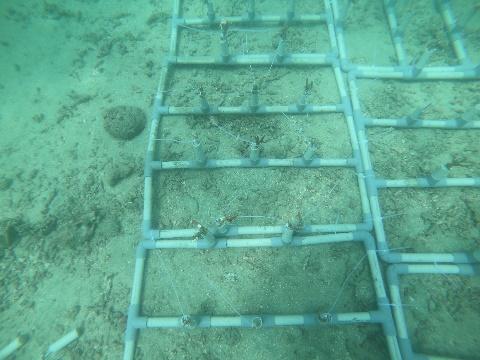
We have seen promising early results in terms of coral survival and growth. Most transplanted fragments have shown signs of healthy tissue expansion and new branch formation within a few months of placement. However, growth and survival are also highly influenced by local environmental factors such as water temperature, current, and sedimentation levels. Ongoing monitoring is key to evaluating long-term success. This method is relatively cost-effective, adaptable to various site conditions, and suitable for community-based coral reef restoration efforts in Aceh.
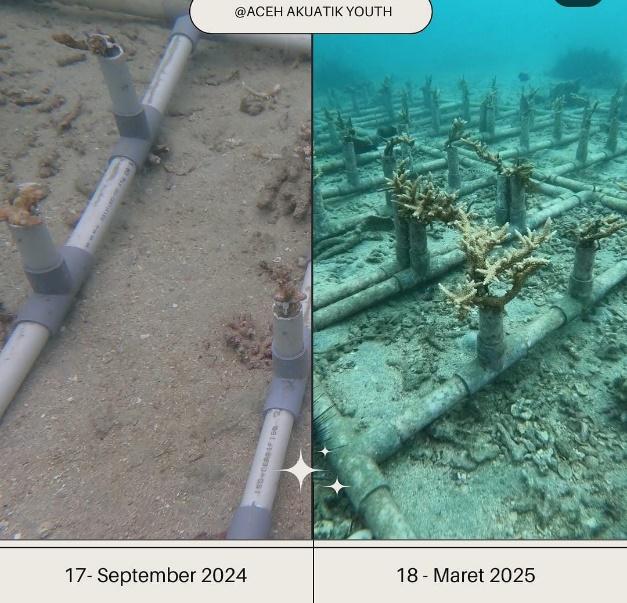
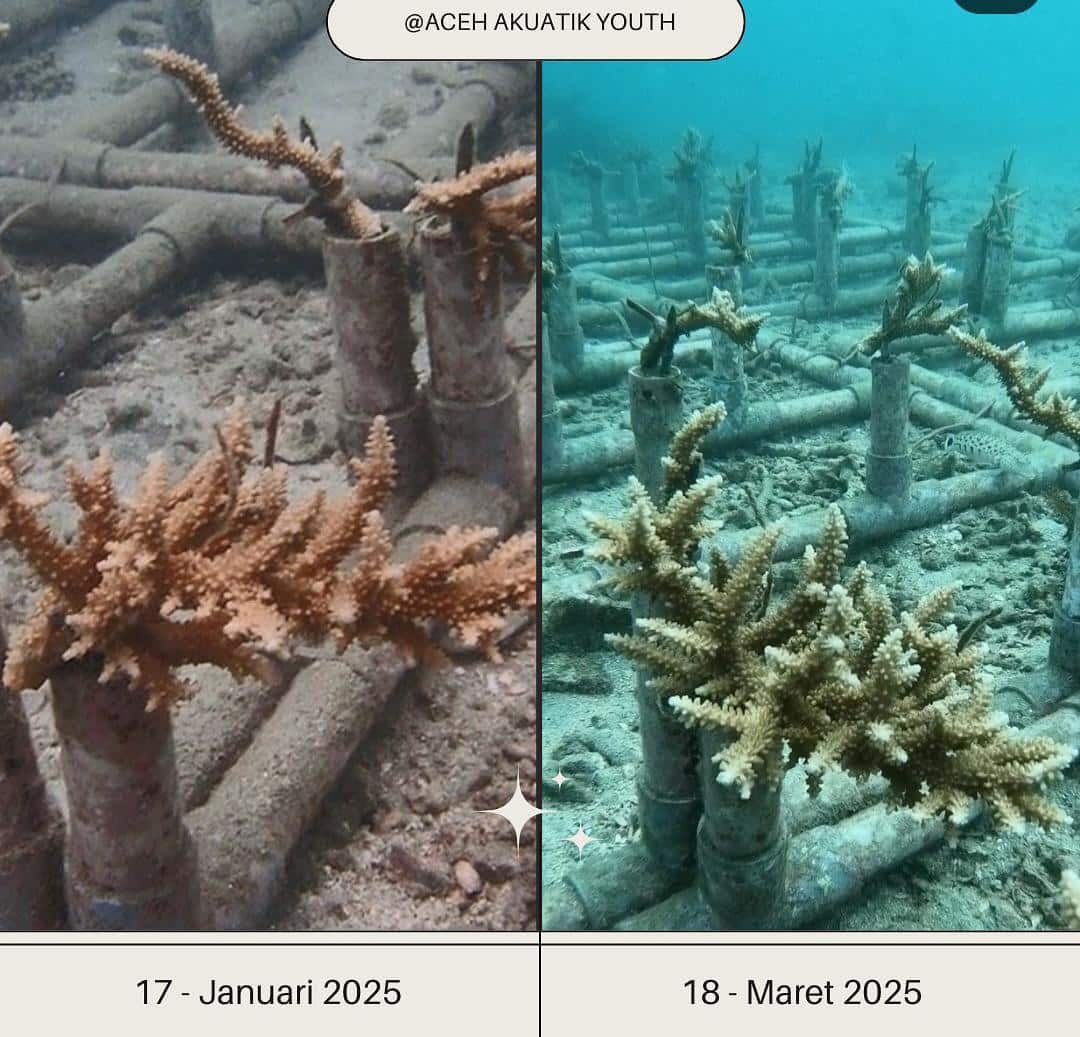
Method 2: Floating Nursery
Another method we have been implementing in Aceh is the Floating Nursery technique. It is a technique designed to grow coral fragments suspended in the water column. This method minimizes contact with the seabed, helping reduce the risk of sedimentation and predation.

The system consists of two vertical steel rods (rebar), each 12 inches in diameter, positioned on the left and right sides, spaced 4 meters apart. Between these rods, lines or ropes are stretched horizontally, and coral fragments are tied or clipped onto the lines, allowing them to hang and float freely in the water column
Advantages of the Floating Nursery
- Better water circulation around the coral fragments, which supports healthy growth.
- Reduced exposure to sediment and benthic predators
- Easy maintenance and monitoring access for divers or restoration teams.
- Ideal for fast-growing branching corals like Acropora spp.
This method has shown good results, particularly in moderately calm waters where the floating structure remains stable. Growth rates have been promising, and fragment survival is generally high due to the reduced stress from environmental factors on the seabed.
My learning and thoughts after taking the course
With Ocean Gardener’s Full Coral Restoration Certificate, I gained extensive knowledge, particularly in the identification of coral species. I learned to distinguish between different coral morphologies and to understand the ecological characteristics of each type. This knowledge is crucial, as the success of restoration efforts depends greatly on understanding which coral species are suitable for a given location.
I explored various coral planting techniques—from fragmentation methods and building underwater nursery structures, to transplanting coral fragments onto natural substrates. All of this was done using sustainable approaches, taking into account factors such as current strength, depth, light availability, and environmental conditions. I truly witnessed how science and conservation can go hand in hand.
After completing the Ocean Gardener program in Bali, I returned home with more than just knowledge—I returned with new hope for Aceh’s marine ecosystems. I learned about effective and efficient coral restoration methods, from coral nursery management to replanting coral into its natural habitat.
This experience has changed the way I think about coral restoration. I now understand that it’s not just about growing corals, but also about ensuring that the methods we use do not create new problems for the ocean. As a result, I’m now more committed to exploring alternative, eco-friendly materials and avoiding plastic for coral transplantation in Aceh. Restoration should go hand in hand with sustainability—and that mindset begins with the smallest choices, like the materials we use to build our nurseries.
One of the most impressive aspects for me was witnessing the biodiversity of the coral reefs in Nusa Penida. I saw a wide range of hard and soft coral species living side by side with vibrant reef fish. It was a truly healthy ecosystem—and honestly, a bit disheartening when I compared it to the condition of coral reefs in many parts of Aceh.
But that doesn’t mean change isn’t possible.
At my organization in Aceh, we have started taking concrete steps to implement what I learned in Bali. We are developing a more structured and environmentally friendly coral nursery system, adapted to local conditions. I believe that with the right knowledge and a spirit of collaboration, we can revive our marine ecosystems.
Coral reef restoration is not just about planting coral. It’s about preserving the future of our oceans, educating coastal communities, and raising awareness that the ocean is not a dumping ground, but a vital source of life.
Thank you Ocean Gardener for the invaluable knowledge. Now it’s time for me to share and take action—right here at home.
